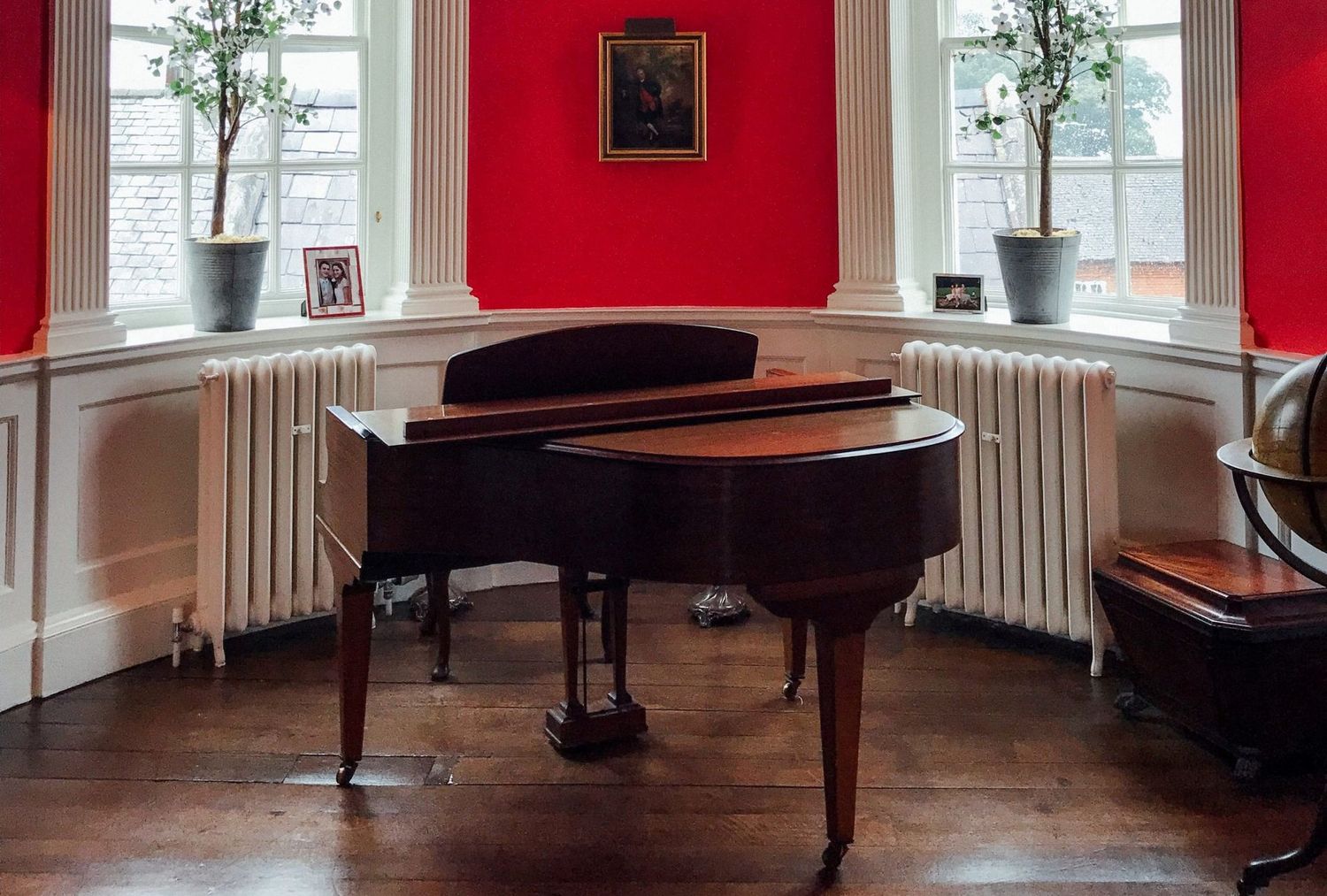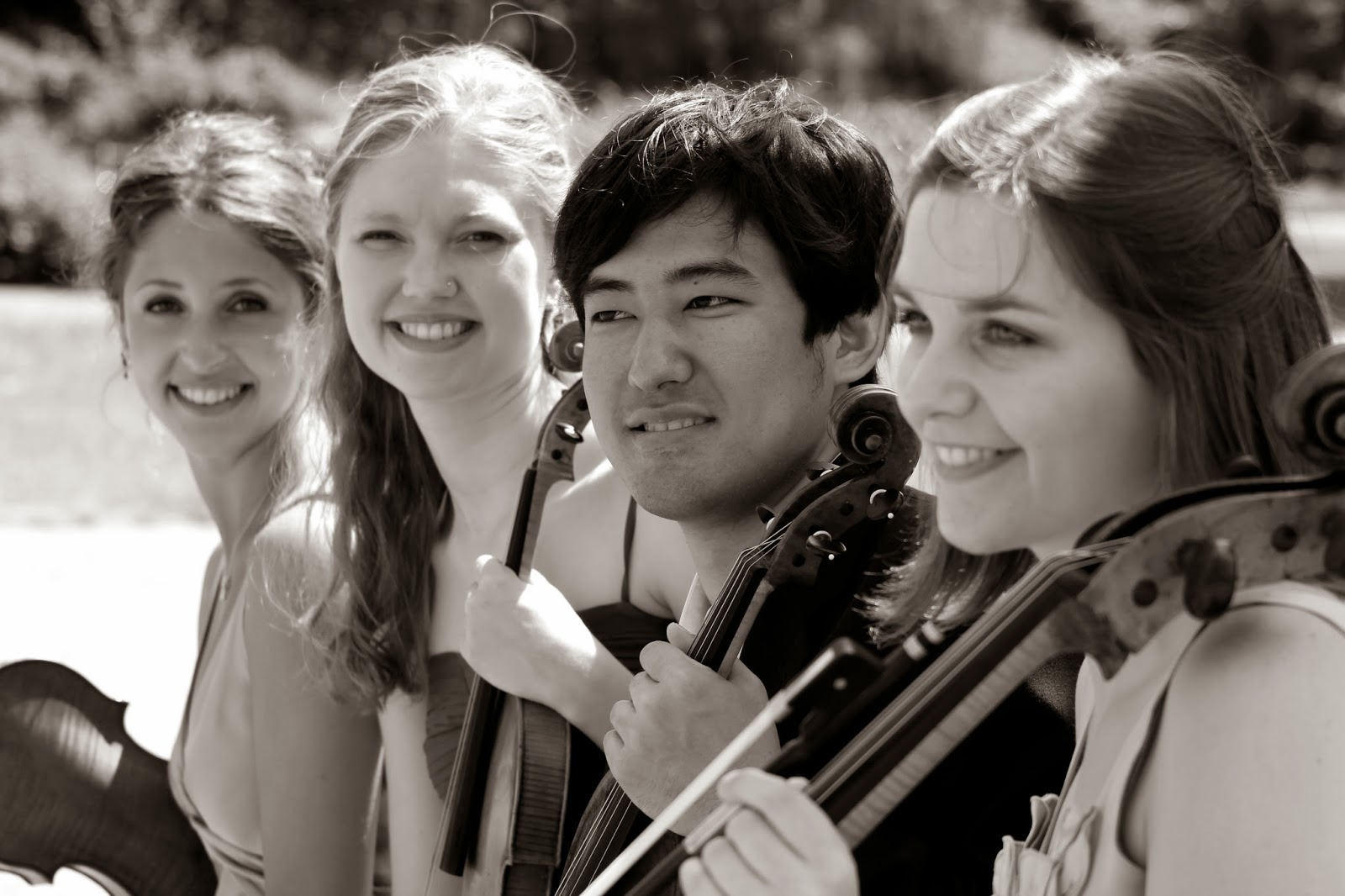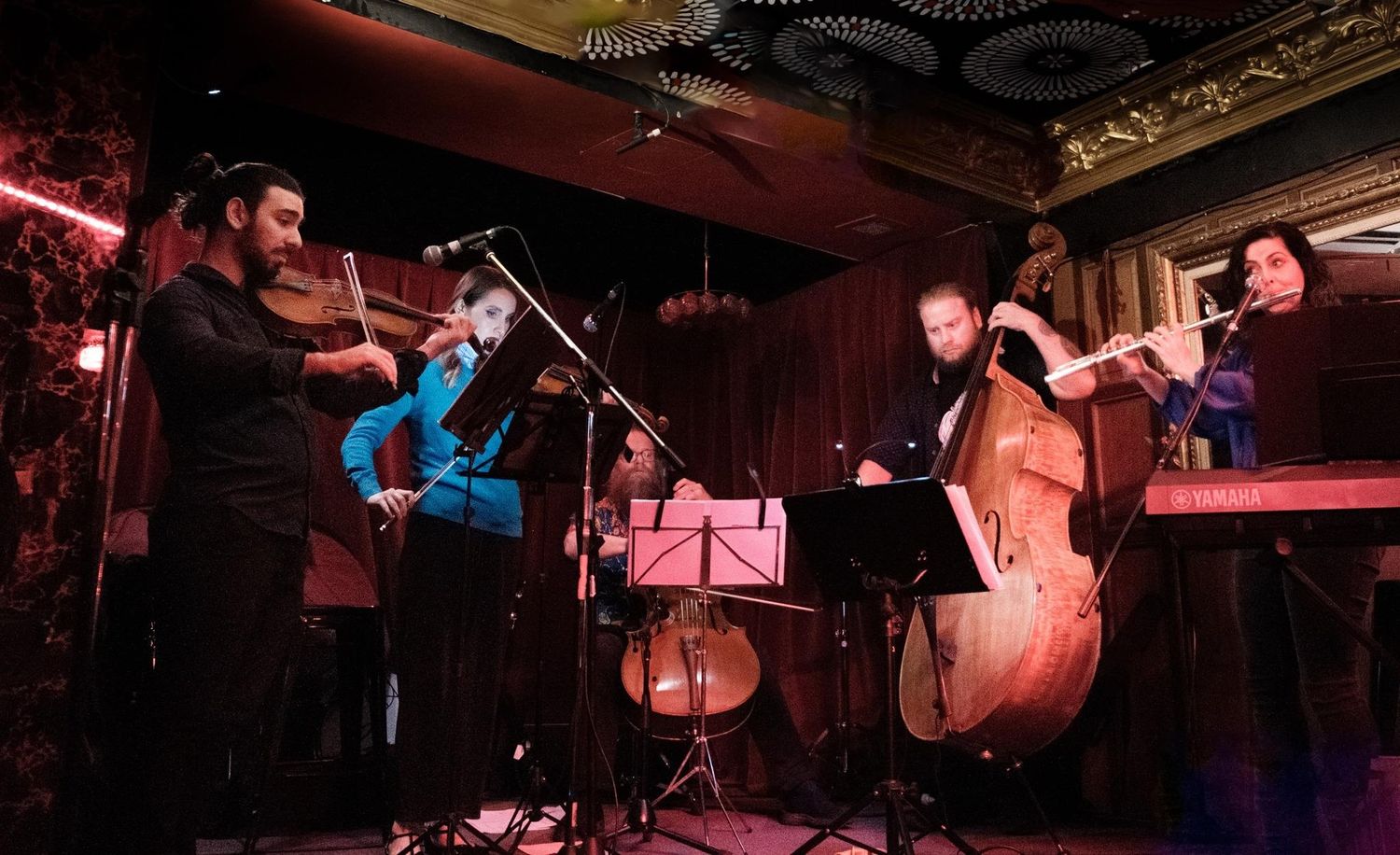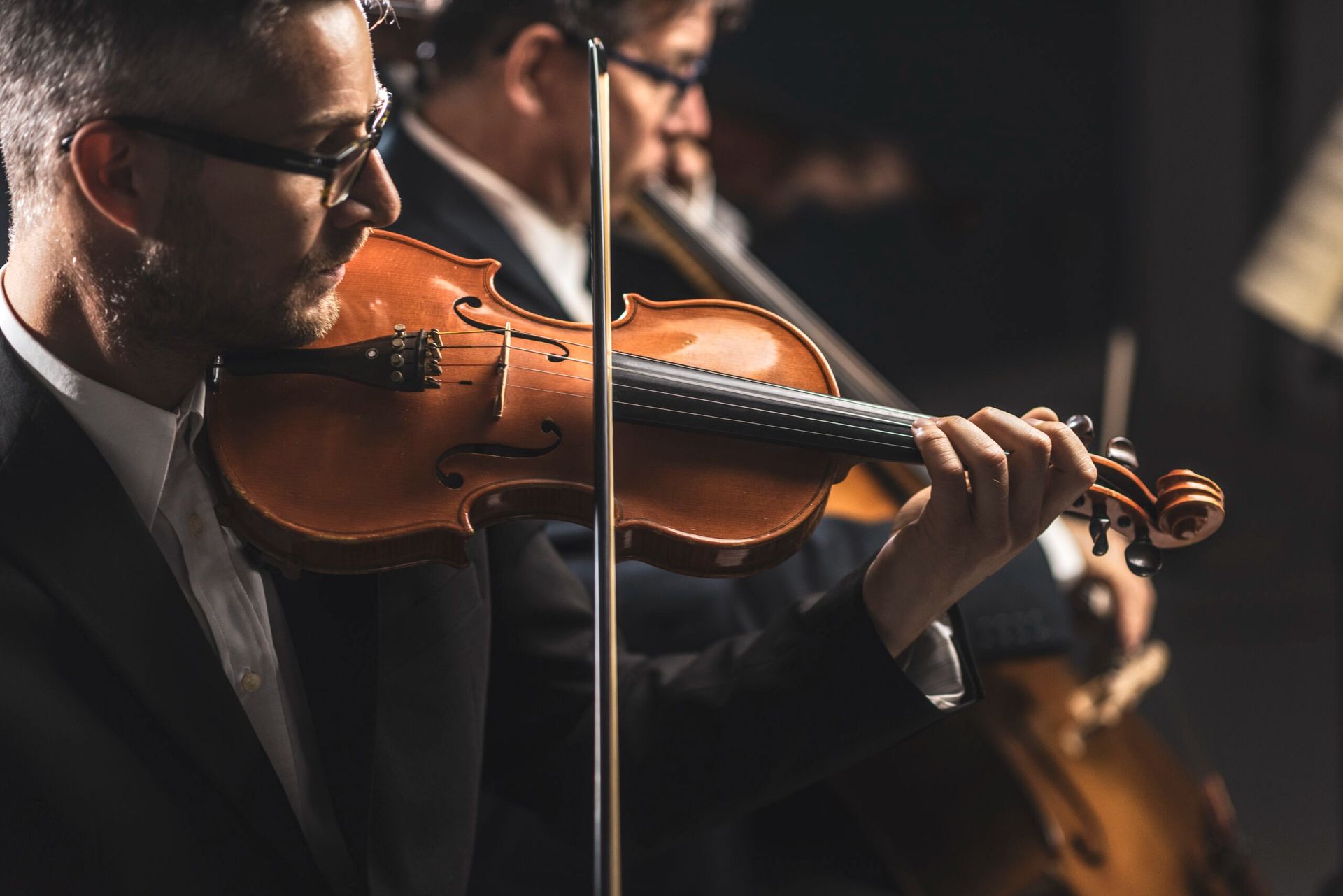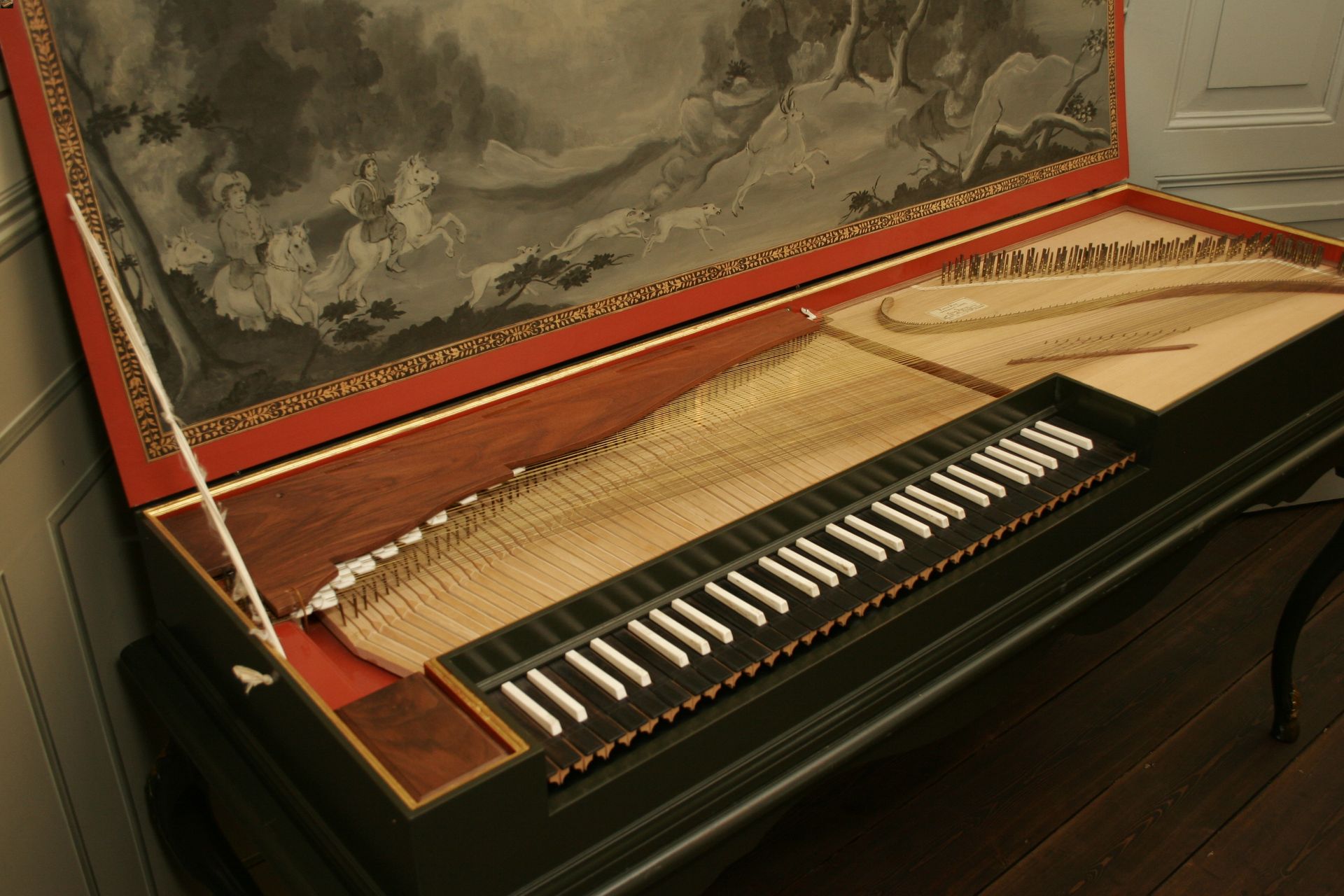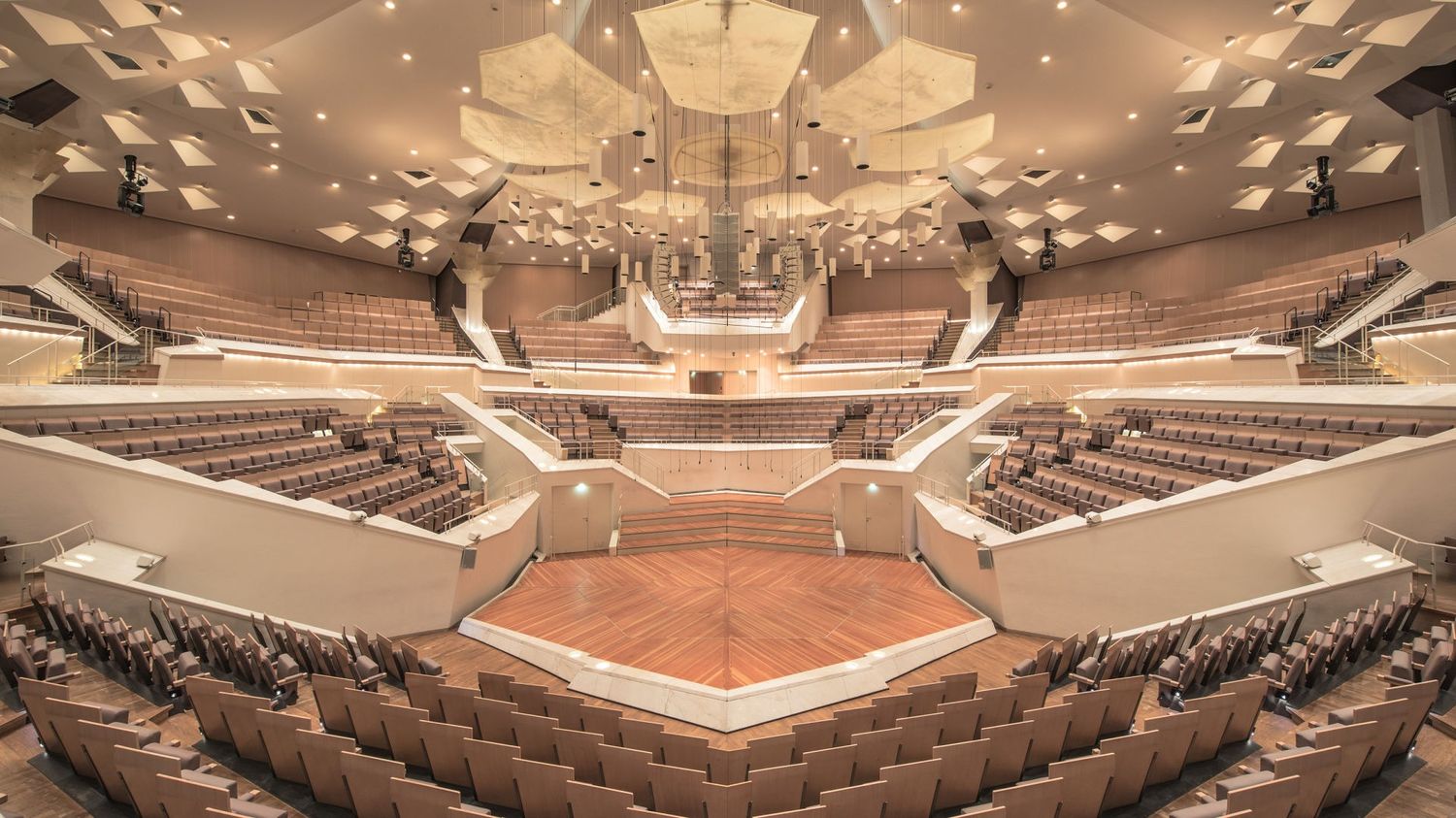Home>Events & Info>Chamber Music>What Defines Chamber Music
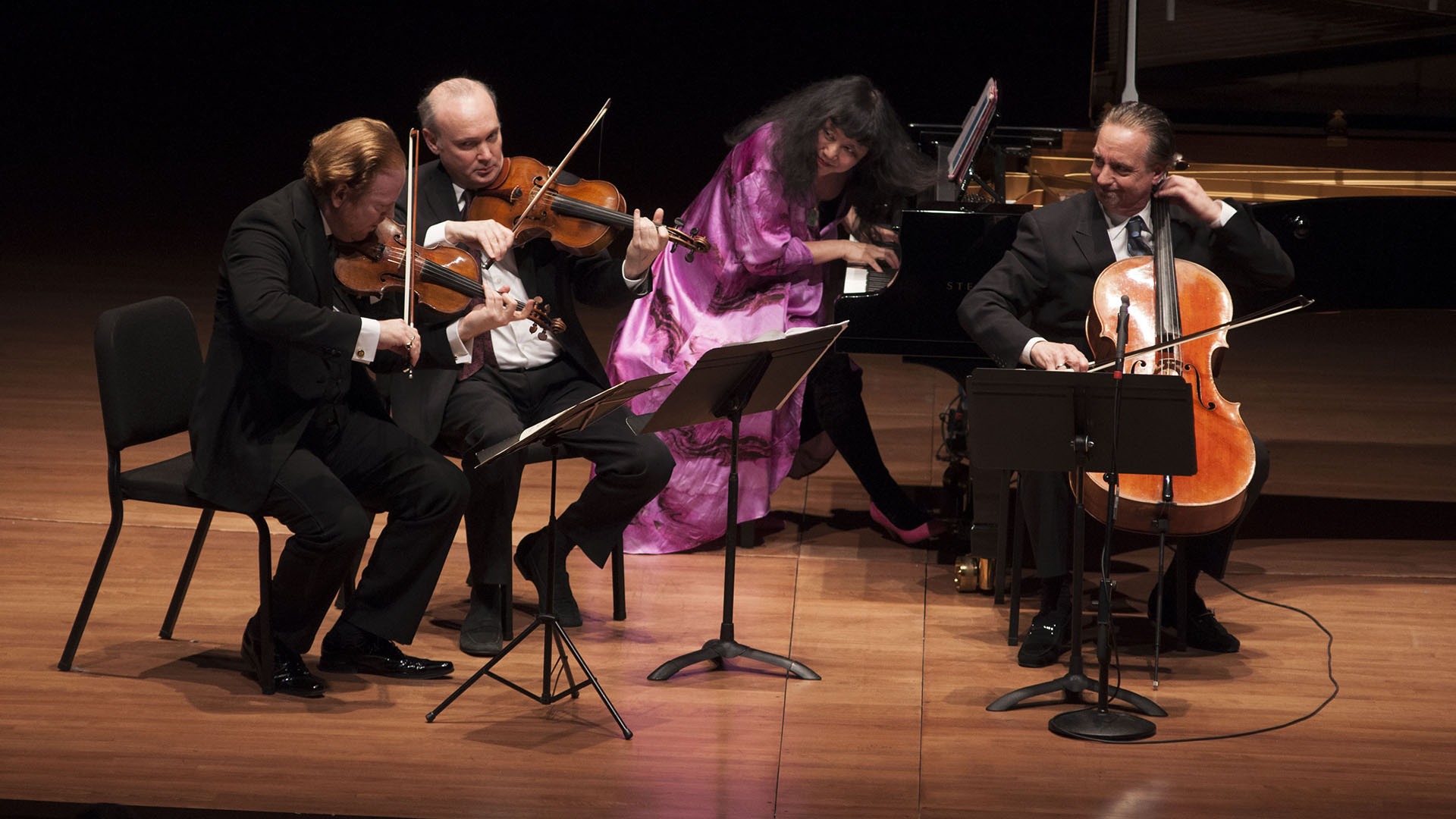

Chamber Music
What Defines Chamber Music
Modified: January 22, 2024
Learn what chamber music is and how it differs from other genres, its historical significance, and why it continues to captivate classical music enthusiasts
(Many of the links in this article redirect to a specific reviewed product. Your purchase of these products through affiliate links helps to generate commission for AudioLover.com, at no extra cost. Learn more)
Table of Contents
Introduction
Chamber music is a genre that has captivated musicians and audiences alike for centuries. From intimate salons to grand concert halls, chamber music provides a unique experience, allowing the performers and listeners to connect on a deeply personal level. With its rich history and diverse styles, chamber music continues to flourish and evolve.
At its core, chamber music refers to music that is performed by a small group of musicians, typically one player per part. The term “chamber” refers to the intimate setting in which these performances traditionally took place, such as a chamber or a salon. Unlike orchestral or choral music, chamber music allows for a more intimate and nuanced interaction between the musicians, enabling them to communicate and respond to each other in real-time.
Throughout history, chamber music has served as a platform for musical experimentation and expression. It has allowed composers and performers to push the boundaries of traditional musical structures and explore new avenues of creativity. From the delicate melodies of the baroque era to the bold experimentation of the modern period, chamber music has remained a vibrant and dynamic art form.
Over the years, chamber music has developed its own distinct characteristics that set it apart from other genres. One of these characteristics is the equal importance given to each instrument in the ensemble. Unlike orchestral music, where the focus is often on the conductor and the overall sound of the ensemble, chamber music highlights the individual voices of each instrument, creating a delicate balance and interplay between them.
In terms of instrumentation, chamber music can encompass a wide range of combinations, from duos to larger ensembles. Common examples include string quartets, piano trios, wind quintets, and brass ensembles. Each combination offers its own unique timbre and possibilities for musical expression.
Another defining aspect of chamber music is its structure and form. While it can draw from various forms such as sonatas, symphonies, and dances, chamber music often showcases more intimate and intricate compositions. The smaller ensemble size allows for greater flexibility in exploring different musical ideas and motifs.
In the following sections, we will delve deeper into the origins, characteristics, notable composers, and evolution of chamber music, shedding light on the enduring appeal and significance of this remarkable genre.
The Origins of Chamber Music
The roots of chamber music can be traced back to the Renaissance period, where small groups of musicians would gather in chambers or private residences to perform for nobility and esteemed guests. During this time, chamber music was often written for instrumental ensembles, such as viol consort or lute consort.
However, it was during the Baroque era that chamber music began to flourish and establish its distinct identity. Composers like Johann Sebastian Bach and Antonio Vivaldi composed works for small ensembles, including trio sonatas and chamber concertos. These compositions showcased the technical skills and expressive qualities of individual instruments, elevating chamber music to new heights.
As the classical era unfolded in the 18th century, chamber music continued to evolve. The rise of the string quartet became particularly significant during this period, with composers like Joseph Haydn and Wolfgang Amadeus Mozart making substantial contributions to the genre. String quartets became the epitome of chamber music, combining the rich tonal qualities of two violins, viola, and cello in intricate and heartfelt compositions.
During the Romantic era, chamber music continued to flourish, with composers like Franz Schubert, Robert Schumann, and Johannes Brahms creating iconic works. The development of the piano as a prominent chamber music instrument contributed to the rich tapestry of sounds and heightened emotional expression in compositions.
It is important to note that throughout history, chamber music was often performed in intimate settings, such as private salons or the homes of influential patrons. This allowed for a close interaction between the musicians and the audience, creating a sense of shared experience and connection.
As the 20th century dawned, chamber music experienced a resurgence of exploration and experimentation. Composers such as Arnold Schoenberg, Igor Stravinsky, and Béla Bartók pushed the boundaries of traditional tonality and introduced new forms and techniques to chamber music compositions.
With the advent of recording technology and the accessibility of music through various mediums, chamber music gained wider recognition and became more accessible to audiences worldwide. Today, chamber music continues to thrive, with contemporary composers embracing diverse styles and incorporating elements from a range of musical traditions.
The origins of chamber music provide a foundation for understanding its significance and continued relevance in the present day. The evolution of the genre across different periods has shaped the diverse range of sounds, forms, and styles that we now enjoy.
Characteristics of Chamber Music
Chamber music possesses a distinctive set of characteristics that sets it apart from other genres. Here are some of the key attributes that define chamber music:
- Intimacy: Chamber music is characterized by its intimate nature, allowing for a close interaction between the performers and the audience. The small ensemble size fosters a sense of connection and direct communication among the musicians, as well as between the musicians and the listeners.
- Equal Importance of Parts: Unlike orchestral music, where certain instruments or sections take on prominent roles, chamber music grants equal importance to each instrument in the ensemble. Each player has a unique voice and contributes to the overall texture and musical dialogue. The interplay between instruments creates a delicate balance and collaborative spirit.
- Nuance and Expressivity: Chamber music provides a platform for musicians to explore the subtleties and nuances of their instruments. The intimate setting allows for greater freedom in expressing emotions and conveying musical ideas. Performers can showcase their technical skills, interpretive prowess, and personal musical interpretation in a more nuanced and intimate manner.
- Interplay and Dialogue: The small ensemble size of chamber music fosters a heightened sense of musical dialogue and interaction. Musicians engage in a continuous exchange of musical ideas, responding to each other’s phrasing, dynamics, and musical gestures. This interplay creates a dynamic and engaging musical conversation.
- Variety of Forms: Chamber music encompasses a wide range of musical forms, including sonatas, quartets, trios, and quintets. Each form has its own unique structure, presenting opportunities for composers to experiment with different musical ideas and motifs. This variety allows for a rich and diverse repertoire in chamber music.
- Virtuosity and Collaboration: Chamber music often demands a high level of technical skill and virtuosity from its performers. Each musician has the opportunity to shine and showcase their individual talent while collaborating closely with others. The intricate ensemble work showcases the musicians’ ability to blend their voices, synchronize their phrasing, and create a unified musical experience.
These characteristics contribute to the distinctiveness and allure of chamber music. The genre’s ability to convey intricate emotions, foster collaboration, and provide a unique platform for artistic expression continues to captivate audiences and musicians worldwide.
Instrumentation in Chamber Music
One of the defining features of chamber music is its diverse range of instrumentations. While orchestral music typically involves a large ensemble with multiple instruments playing each part, chamber music allows for more intimate groupings. Here are some of the common instrumentations found in chamber music:
- String Quartet: The string quartet is perhaps the most iconic and popular form of chamber music. It consists of two violins, a viola, and a cello. This ensemble offers a rich and balanced sound, with the four instruments blending together to create intricate melodies, harmonies, and textures.
- Piano Trio: A piano trio typically includes a piano, a violin, and a cello. This combination allows for versatility and a wide range of musical expressions and dynamics. The piano acts as both a melodic and harmonic instrument, while the violin and cello provide melodic lines and add depth to the ensemble.
- Wind Quintet: A wind quintet comprises five woodwind and brass instruments: flute, oboe, clarinet, bassoon, and French horn. This ensemble combines different tonal colors and timbres, offering a unique and varied palette of sounds. It allows for the exploration of diverse musical styles and genres.
- Brass Ensemble: A brass ensemble is composed of different brass instruments, such as trumpets, trombones, and French horns. This configuration enables powerful and majestic performances, with the instruments creating a bold and resonant sound.
- Chamber Orchestra: While chamber music typically refers to small ensembles, a chamber orchestra is a scaled-down version of a full symphony orchestra. It consists of a reduced number of players, encompassing various sections, including strings, woodwinds, brass, and percussion.
These are just a few examples of the many instrumentations used in chamber music. The choice of instruments can significantly impact the overall sound and character of a composition. Composers consider the unique qualities of each instrument and explore the possibilities for melodic lines, harmonies, and interactions within the ensemble.
Chamber music allows for a close-knit collaboration among the musicians, fostering a sense of intimacy and unity. Each instrument plays a crucial role in shaping the musical narrative, and the interplay between instruments creates a vibrant and engaging musical conversation.
The flexibility of instrumentations in chamber music enables composers to experiment with different combinations and explore the tonal possibilities of various instruments. This diversity contributes to the richness and endless creativity found within the genre.
Structure and Form in Chamber Music
Structure and form play a vital role in chamber music, shaping the organization and development of the musical composition. While there is a variety of structures and forms utilized in chamber music, certain conventions and patterns are commonly observed. Here are some key aspects of structure and form in chamber music:
- Sonata Form: Sonata form is a common structure used in many chamber music compositions. It typically consists of three main sections: exposition, development, and recapitulation. The exposition introduces the primary themes and establishes the musical material. The development section explores and develops these themes further through variations and transformations. Finally, the recapitulation brings back the initial themes, typically with some modifications, providing a sense of resolution and closure.
- Theme and Variations: Theme and variations form is another popular structure found in chamber music. It involves presenting an initial theme or melody and then creating variations that explore different aspects of the theme. Each variation may alter the rhythm, harmony, dynamics, or ornamentation while retaining the core musical material. This structure allows for musical creativity and allows performers to showcase their interpretive skills.
- Rondo Form: Rondo form features a recurring theme that alternates with contrasting sections. The main theme, known as the “refrain” or “rondo theme,” serves as an anchor throughout the composition. It is interspersed with contrasting sections called “episodes” or “episodic material.” This structure creates a sense of balance and provides opportunities for thematic development and contrast.
- Minuet and Trio: The minuet and trio form is often used for the third movement of chamber music compositions. It consists of a stately dance-like section known as the minuet, followed by a contrasting section called the trio. The trio section provides a refreshing change of pace and musical character before returning to the minuet. This form adds variety and a sense of balance to the overall structure of the composition.
- Binary and Ternary Forms: Binary and ternary forms are structures that divide a composition into two or three distinct sections, respectively. In binary form, the first section (A) is followed by a contrasting second section (B), creating an A-B structure. Ternary form, on the other hand, adds a contrasting middle section (C) between two repetitions of the initial section (A), resulting in an A-B-A or A-B-C-A structure. These forms offer compositional flexibility and create satisfying musical journeys for the listeners.
These are just a few examples of the various structures and forms used in chamber music. Composers often blend these structures or create their own unique arrangements to suit the expressive needs of their compositions. The structure and form of chamber music contribute to the overall coherence, development, and emotional impact of the musical piece, guiding both the performers and the listeners through a well-crafted musical narrative.
Styles and Periods of Chamber Music
Chamber music has evolved over time, encompassing various styles and periods that reflect the musical trends and cultural influences of different eras. Here are some key styles and periods of chamber music:
- Baroque: The Baroque period, spanning from the early 17th to the mid-18th century, was marked by intricate ornamentation, contrapuntal textures, and the development of the basso continuo system. Baroque chamber music featured works such as trio sonatas, solo sonatas, and chamber concertos, composed by renowned figures like Antonio Vivaldi and Johann Sebastian Bach.
- Classical: The Classical period, which emerged in the mid-18th century, prioritized clarity, balance, and formal structures. Composers like Joseph Haydn, Wolfgang Amadeus Mozart, and Ludwig van Beethoven contributed significantly to the chamber music repertoire during this time. The string quartet emerged as a distinguished genre, showcasing the elegant melodies, symmetrical structures, and refined techniques of the era.
- Romantic: The Romantic period, spanning from the early 19th to the early 20th century, brought forth passionate expressiveness, individualism, and expansive emotional range. Composers like Franz Schubert, Robert Schumann, and Johannes Brahms composed chamber music that featured lush harmonies, soaring melodies, and dramatic contrasts. The piano played an increasingly significant role, influencing the compositional style and expanding the possibilities of chamber music.
- Impressionist and Modern: In the late 19th and early 20th centuries, composers like Claude Debussy and Maurice Ravel introduced innovative harmonies, exotic scales, and atmospheric textures, giving rise to the impressionist movement. In the early 20th century, as the modernist movement gained prominence, composers like Arnold Schoenberg, Igor Stravinsky, and Béla Bartók pushed the boundaries of tonality and form, introducing dissonance, complex rhythms, and unconventional structures into their chamber music compositions.
- Contemporary: Contemporary chamber music refers to works composed in recent decades, reflecting the diverse musical trends and styles of our time. Contemporary composers draw inspiration from various genres, experimenting with electronics, extended techniques, and interdisciplinary collaborations. Chamber music in the contemporary era embraces eclecticism, cultural diversity, and a sense of exploration.
Each style and period of chamber music offers a unique musical language and emotional character. By exploring the different styles and periods, listeners can embark on a journey through the rich history and evolution of this captivating genre.
Notable Composers in Chamber Music
Chamber music has been shaped by the contributions of many esteemed composers throughout history. Their unique styles and innovative approaches have left an indelible mark on the genre. Here are a few notable composers who have made significant contributions to the world of chamber music:
- Johann Sebastian Bach (1685-1750): Bach’s works for chamber music, particularly his solo instrumental works, such as the Sonatas and Partitas for violin and the Suites for solo cello, are considered masterpieces of the Baroque era. Bach’s compositions showcase the technical and expressive capabilities of each instrument.
- Joseph Haydn (1732-1809): Often referred to as the “Father of the String Quartet,” Haydn’s contributions to chamber music include numerous string quartets and piano trios. His works exemplify the Classical style and feature elegant melodies, rich harmonies, and meticulous craftsmanship.
- Wolfgang Amadeus Mozart (1756-1791): Mozart’s chamber music output is vast and diverse, encompassing string quartets, piano trios, and wind serenades. Known for his exquisite sense of melody, impeccable craftsmanship, and emotional depth, Mozart’s chamber works exemplify the elegance and beauty of the Classical era.
- Ludwig van Beethoven (1770-1827): Beethoven’s contributions to chamber music revolutionized the genre. His string quartets, particularly the late quartets, pushed the boundaries of form, harmony, and emotional expression. Beethoven’s chamber music showcases his profound musical vision and groundbreaking compositional techniques.
- Franz Schubert (1797-1828): Schubert’s chamber music compositions, such as his string quartets, piano trios, and the iconic “Trout Quintet,” exhibit a seamless blend of lyricism, drama, and introspection. Schubert’s works bridge the Romantic era, combining virtuosity, expansive melodies, and emotional depth.
- Johannes Brahms (1833-1897): Brahms carried the torch of the Romantic era in his chamber music compositions. His works for string quartet, piano trio, and clarinet quintet brim with rich harmonies, intricate counterpoint, and intense emotional expression. Brahms’ chamber music displays both mastery of form and a profound depth of feeling.
- Claude Debussy (1862-1918): Debussy, a leading figure of impressionism, explored new harmonic and tonal possibilities in his chamber music. His compositions, such as the String Quartet and the Sonata for Flute, Viola, and Harp, feature ethereal textures, fluid melodies, and impressionistic colors.
- Béla Bartók (1881-1945): Bartók’s chamber music compositions blend folk influences, virtuosic writing, and innovative techniques. His string quartets, the Sonata for Two Pianos and Percussion, and the Contrasts for clarinet, violin, and piano reflect his exploration of Eastern European musical traditions and his unique voice as a composer.
These are just a few of the many notable composers who have left an enduring legacy in the realm of chamber music. Their works continue to be studied, performed, and admired for their artistic brilliance and contribution to the development and evolution of chamber music as a genre.
Evolution of Chamber Music
The evolution of chamber music is a journey that spans centuries, reflecting the changing musical landscape and societal influences. Over time, chamber music has undergone significant transformations in terms of style, structure, and instrumentation.
During the Renaissance, chamber music consisted primarily of vocal compositions and instrumental consort music. As the Baroque era emerged, composers began writing more complex and virtuosic works for smaller ensembles. The development of the basso continuo system allowed for greater harmonic and contrapuntal possibilities in chamber music compositions.
The Classical period marked a turning point in the evolution of chamber music. Composers like Haydn and Mozart expanded the repertoire and sophistication of the genre. The string quartet, in particular, gained prominence, with Haydn often referred to as the “Father of the String Quartet.” This era emphasized balance, clarity, and formal structures.
In the Romantic era, chamber music embraced emotional intensity and individual expression. Composers like Schubert, Brahms, and Dvořák incorporated rich harmonies and expansive melodies into their chamber works. The piano took on a more prominent role, influencing the compositional style and expanding the possibilities of expression in chamber music.
With the advent of the 20th century, chamber music entered a period of experimentation and exploration. Composers like Debussy, Bartók, and Schoenberg broke away from traditional tonalities and ventured into new harmonic realms. Innovations in composition and performance techniques opened doors to avant-garde styles and expanded the boundaries of chamber music.
Contemporary chamber music continues to evolve, embracing a wide-ranging diversity of styles and influences. Composers draw inspiration from various genres, incorporating elements of jazz, folk music, and electronic soundscapes. Collaborations between chamber musicians and artists from different disciplines have also become more prevalent, pushing the boundaries of the genre even further.
Advancements in technology and the accessibility of music have also played a role in the evolution of chamber music. Recordings, digital platforms, and online communities have made chamber music more accessible to a wider audience, sparking renewed interest in the genre and fostering global collaborations.
Throughout its evolution, chamber music has maintained its core characteristics of intimacy, collaborative interplay, and the exploration of individual voices within a small ensemble. This enduring nature of chamber music, combined with its adaptability, ensures its continued relevance and resonance in the world of music.
Chamber Music Today
Chamber music continues to thrive in the contemporary music scene, captivating audiences and musicians alike. In today’s musical landscape, chamber music encompasses a wide range of styles, approaches, and collaborations. Here are some key aspects of chamber music in the present day:
Diversity and Exploration: Contemporary chamber music embraces diversity in terms of musical styles, influences, and cultural traditions. Composers and performers are unafraid to experiment and fuse genres, resulting in a vibrant and eclectic repertoire. Chamber ensembles often collaborate with artists from various disciplines, such as dancers, visual artists, and poets, pushing the boundaries of artistic expression.
Revival and Preservation: Many contemporary musicians are dedicated to reviving and preserving lesser-known chamber music works from different periods, shedding light on hidden gems that might otherwise be forgotten. This commitment to exploration and rediscovery breathes new life into the chamber music repertoire.
Education and Community Engagement: Chamber music education plays a vital role in ensuring the future of the genre. Schools, conservatories, and community programs offer opportunities for young musicians to learn and perform chamber music. Chamber music festivals and workshops provide platforms for musicians of all ages to come together, collaborate, and share their love for the art form.
Technology and Innovation: As technology advances, chamber musicians are finding innovative ways to incorporate it into their performances. Virtual collaborations, live streaming concerts, and digital platforms have increased accessibility and reach. Musicians are also exploring new techniques for sound manipulation and incorporating electronic elements into their chamber music compositions.
Chamber Music in Non-Traditional Venues: While chamber music performances often take place in concert halls, there is a growing trend of bringing chamber music to non-traditional spaces. Cafes, art galleries, libraries, and even private homes provide intimate settings for chamber music performances, creating a more personal and engaging experience for both musicians and audiences.
Collaborative Spirit: Chamber music exemplifies the importance of collaboration and mutual respect among musicians. The genre encourages active listening, responsiveness, and synchronization among ensemble members. This collaborative spirit fosters a sense of camaraderie and shared musical exploration.
Chamber Music in Film and Popular Culture: Chamber music often finds its way into film soundtracks, adding depth and emotional resonance to on-screen narratives. Its inclusion in popular culture introduces new audiences to the genre and showcases the enduring appeal and versatility of chamber music.
Chamber music today is a vibrant and evolving genre, continuously adapting to the changing cultural and technological landscape. It remains a testament to the intimate connection between musicians and listeners, offering a unique and captivating musical experience.
Conclusion
Chamber music is a genre that has captivated audiences and musicians throughout history. Its intimate nature, collaborative spirit, and diverse repertoire make it a cherished and enduring art form. From the Renaissance to the present day, chamber music has evolved and adapted to reflect changing musical trends, societal influences, and technological advancements.
The origins of chamber music, rooted in the Renaissance and Baroque periods, set the stage for its development as a genre. The Classical era brought refinement and structure, while the Romantic era infused emotion and individual expression. The 20th century saw experimentation and innovation, expanding the boundaries of chamber music through new harmonic languages and diverse stylistic influences.
Notable composers, such as Bach, Mozart, Beethoven, and Debussy, have left lasting legacies with their chamber music compositions. Their works showcase the richness and depth of the genre, pushing the boundaries of musical expression and captivating audiences for generations.
Chamber music today remains vibrant and diverse, embracing a wide range of styles, collaborations, and explorations. Musicians continue to preserve and revive lesser-known works, ignite new musical conversations, and engage with audiences through innovative means. Technology has opened new avenues, allowing for virtual collaborations and increased accessibility to chamber music performances.
Chamber music’s enduring appeal lies in its sense of intimacy, collaborative interplay, and the connection it fosters between performers and listeners. It provides a platform for musicians to showcase their technical skills, interpretive artistry, and personal musical expression. Whether performed in a traditional concert hall or a non-traditional space, chamber music creates a captivating and memorable experience for all involved.
As we continue to explore the ever-evolving world of chamber music, we appreciate the rich history, the diverse repertoire, and the dedication of musicians who keep this genre alive. Chamber music remains an immersive journey of musical expression, conveying a range of emotions, and fostering a deep connection between musicians and audiences.

